Improved LC-MRM quantification sensitivity for cyclic peptides from the natriuretic peptide family
Featuring the SCIEX Triple Quad™ 7500 LC-MS/MS System – QTRAP ® Ready, powered by SCIEX OS Software
Lei Xiong1 , Ian Moore2
1SCIEX, USA, 2SCIEX, Canada
Abstract
Cyclic peptides have been identified as important therapeutic modalities, this is related to their stability in blood and potential for oral dosing. LC-MS method development to quantify trace level cyclic peptides in biological matrices has remained challenging. The high baseline interference in matrices requires the method to be highly selective to obtain desired S/N. They are often resistant to CID fragmentation, due to their knotted tertiary structure and/or nonmobile proton.
Natriuretic peptide (NP) family is a group of genetically distinct cyclic peptides with similar structure, containing an amino acid ring formed by a disulfide bond between two cysteine residues (Figure 1). They have emerged as important candidates for development of diagnostic tools and therapeutic agents in cardiovascular diseases.1 In this project, two peptides in the NP family, atrial natriuretic peptide (ANP) and B-type natriuretic peptide (BNP) are selected as the model analyte to evaluate the quantification capability of SCIEX Triple Quad™ 7500 LC-MS/MS System. The OptiFlow® Pro Ion Source together with D Jet™ Ion Guide offers significantly improved sensitivity for cyclic peptide quantification, through improved desolvation and focusing to improve MRM performance. Both ANP and BNP are solidly quantified at 0.05 ng/mL in rat plasma, multiple times lower than the previously published LLOQ.2 Outstanding reproducibility, precision, accuracy, and linearity are also achieved, proving the workflow robustness in parallel with the superior sensitivity.
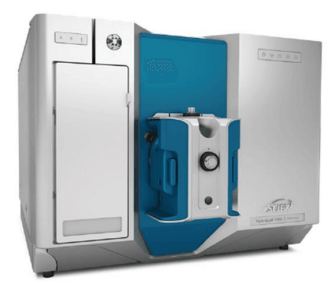
Figure 1. The amino acid sequences of human ANP and BNP. A disulfide bond is formed between the two cysteine residues, (C7-C23 for ANP, C10-C26 for BNP) to form the ring shape.
Key features of cyclic peptide quantification workflows using the SCIEX Triple Quad™ 7500 LC-MS/MS System – QTRAP® Ready
- Quantification of cyclic peptides (ANP and BNP) at 0.05 ng/mL in rat plasma with outstanding reproducibility, precision, accuracy, and linearity
- Hardware improvements including:
- D Jet Ion Guide—sampling more ions, with no sacrifice in robustness3
- OptiFlow Pro Ion Source—the next generation ion source with no physical adjustments required, achieve the best sensitivity under all conditions3
- E Lens™ Technology—delivers greater sensitivity in ESI with increased field strength and ion generation, through more energetic ESI droplet desolvation3
- 5-fold improvements in S/N were shown compared to the SCIEX Triple Quad™ 6500+ LC-MS/MS System • SCIEX OS Software for data acquisition and processing— single platform for acquisition, processing and management, customizable and easy to use
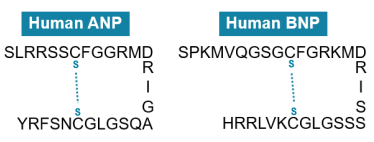 Click to enlarge
Click to enlarge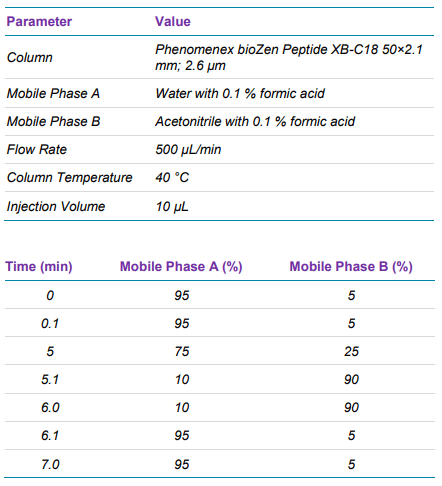 Click to enlarge
Click to enlarge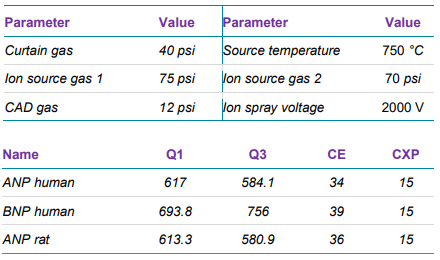 Click to enlarge
Click to enlarge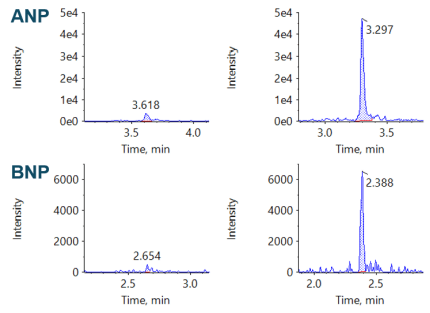 Click to enlarge
Click to enlarge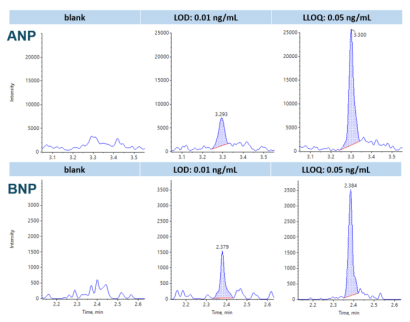 Click to enlarge
Click to enlarge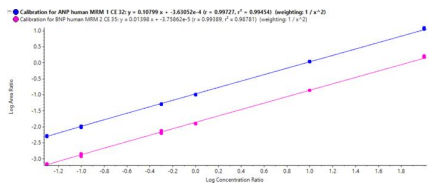 Click to enlarge
Click to enlarge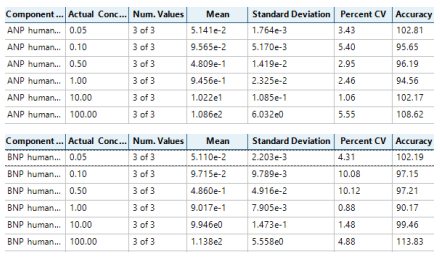 Click to enlarge
Click to enlarge